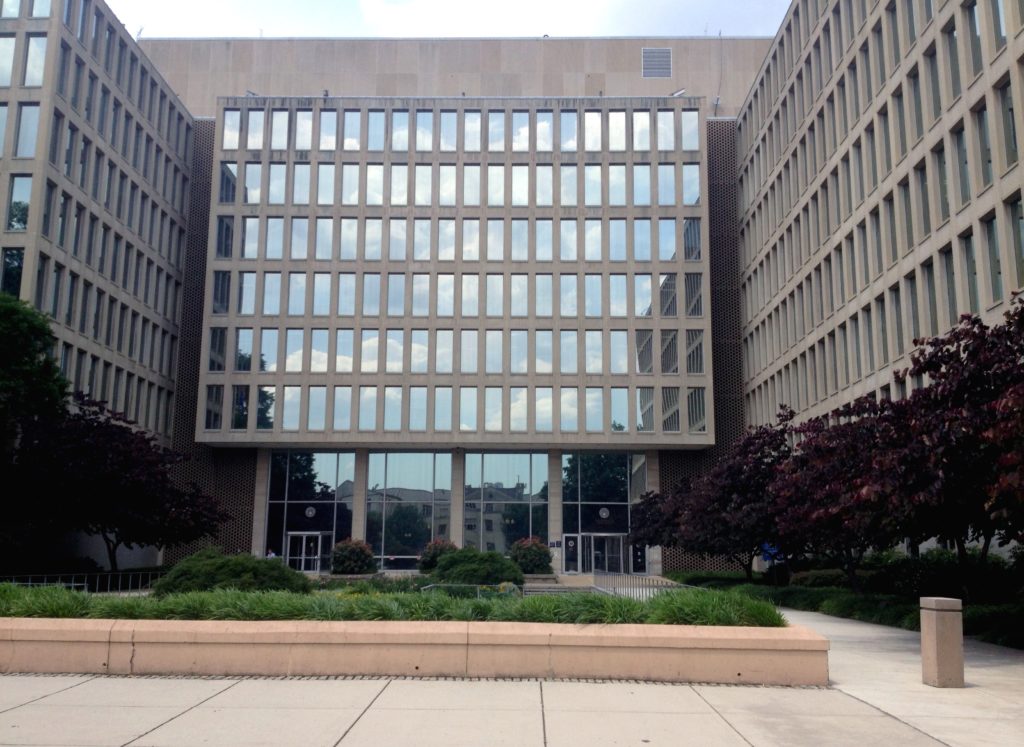Friday Report

From Washington, DC,
- Kaufmann Hall considers health policy in the second Trump administration.
- Fierce Healthcare lets us know,
- “The Department of Health and Human Services (HHS) is firing up to 5,200 probationary employees today, as part of an unprecedented cutting of jobs across the federal government.
- “Of the impacted workers, 1,300 are employed by the Centers for Disease Control and Prevention (CDC) while a sizeable portion work for the National Institutes of Health (NIH). Employees were given four weeks paid administrative leave and notified on the morning of Feb. 14, as first reported by the Associated Press.” * * *
- “The Department of Veterans Affairs announced layoffs Thursday affecting more than 1,000 federal workers, in a move the Trump administration said would save $98 million per year.”
- The Wall Street Journal notes,
- The Trump administration’s effort to slash the federal workforce is pushing employees into a challenging job market, where their age and lack of corporate experience can hold them back.
- Federal workers are also facing an environment where hiring for white-collar jobs has slowed.
- Despite the availability of state and local government jobs, many of these positions take place outside offices and aren’t a good match for federal workers’ experience.
- The American Hospital Association News tells us,
- “President Trump Feb. 13 signed a presidential memorandum ordering the development of a comprehensive plan for “restoring fairness in U.S. trade relationships and countering non-reciprocal trading arrangements.”
- “The announcement directs the U.S. Trade Representative and the Secretary of Commerce, in consultation with the secretaries of a number of U.S. agencies, to develop plans for reciprocal tariffs on every country that taxes U.S. imports and submit a report to the president. In addition, within 180 days of the memo, the director of the Office of Management and Budget will assess all fiscal impacts on the federal government and the impacts of any information collection requests on the public and deliver an assessment in writing to the president.
- “For more information, see the presidential memo and fact sheet.”
From the public health and medical research front,
- The Centers for Disease Control and Prevention announced today,
- COVID-19
- “COVID-19 activity is elevated in many areas of the country. Though wastewater levels are high, emergency department visits are at low levels, and laboratory percent positivity is stable. Emergency department visits and hospitalizations are highest in older adults and emergency department visits are also elevated in young children.
- “There is still time to benefit from getting your recommended immunizations to reduce your risk of illness this season, especially severe illness and hospitalization.
- “CDC expects the 2024-2025 COVID-19 vaccine to work well for currently circulating variants. There are many effective tools to prevent spreading COVID-19 or becoming seriously ill.”
- Influenza
- “Seasonal influenza activity is higher than it has been all season. Additional information about current influenza activity can be found at: Weekly U.S. Influenza Surveillance Report | CDC.”
- RSV
- “RSV activity remains elevated but is declining in most areas of the country. Emergency department visits and hospitalizations are highest in children and hospitalizations are elevated among older adults in some areas.”
- Vaccination
- “Vaccination coverage with influenza and COVID-19 vaccines are low among U.S. adults and children. Vaccination coverage with RSV vaccines remains low among U.S. adults. Many children and adults lack protection from respiratory virus infections provided by vaccines.”
- COVID-19
- Beckers Clinical Leadership points out,
- “A farmer in Mercer County, Ohio, has tested positive for H5N1 influenza, marking the state’s first human case of bird flu.
- “The worker had direct contact with deceased commercial poultry, according to a Feb. 12 news release from the Ohio Department of Health.”
- Per Medscape,
- “How long will vaccine protection last? A simple blood test may have the answer. Researchers at Stanford School of Medicine, Stanford, California, have identified a molecular signature in the blood that appears days after vaccination and predicts the durability of the immune response. Published in Nature Immunology in January, this discovery could transform vaccine development, testing, and personalization of vaccines. The study also offers insights into why some vaccines provide lifelong immunity while others lose effectiveness within months.”
- Per Healio
- “The percentage of U.S. adults with obesity did not significantly rise from 2013 to 2023, though a small uptick in the rate of obesity was seen for children and adolescents, according to data published in JAMA.
- “From 2013 to August 2023, there were small increases in obesity in children and adolescents aged 2 to 19 years, driven by increases among males and children aged 2 to 5 years,” Samuel D. Emmerich, DVM, an epidemiologist at the CDC National Center for Health Statistics, told Healio. “In adults aged 20 years and older, severe obesity increased slightly, driven by increases among women and middle-aged adults. There were no significant changes in any other subgroups, in high weight-for-length or in high waist circumference.”
- Per HCPLive,
- “New research is shedding light on a heightened risk of colorectal cancer (CRC) in patients with both nonadvanced and advanced adenomas detected during colonoscopy, highlighting the importance of surveillance colonoscopy in this population and the need for more frequent screening among those with advanced adenomas.
- “Leveraging data from the Minnesota Colon Cancer Control Study, the present analysis found individuals with adenomas at colonoscopy, regardless of whether or not they were advanced, were at a greater risk of developing CRC than those with no adenomas. Additionally, findings showed participants with advanced adenomas were at increased risk of both CRC mortality and all-cause mortality.
- “Studies have reported the association of advanced adenomas with increased risk of CRC and CRC-related death over the following 5 to 15 years compared with having no advanced adenomas. The association of nonadvanced adenomas with CRC incidence and mortality after colonoscopy is less clear,” Aasma Shaukat, MD, MPH, a gastroenterologist and Robert M. and Mary H. Glickman Professor of Medicine at New York University Grossman School of Medicine, and colleagues wrote. “However, to our knowledge, no studies have evaluated the association of adenomas and advanced adenomas with all-cause mortality.”
- Health Day adds,
- “You may be less likely to develop an especially lethal form of colon cancer if you’re a longtime consumer of yogurt, new research finds.
- “Folks who ate two or more servings of yogurt per week for years had 20% lower odds for an aggressive type of tumor typically found on the right side of the colon, researchers reported Feb. 12 in the journal Gut Microbes.
- “The tumors’ tissues also tested positive for a bacterium commonly found in yogurt, called Bifidobacterium.
- “It has long been believed that yogurt and other fermented milk products are beneficial for gastrointestinal health,” co-senior author Dr. Tomotaka Ugai, a pathologist at Mass General Brigham in Boston, noted. “Our new findings suggest that this protective effect may be specific for Bifidobacterium-positive tumors.”
From the U.S. healthcare business front,
- The Wall Street Journal reports,
- “Johnson & Johnson’s halt of U.S. sales of a new heart-rhythm device due to safety concerns is hobbling a major strategic push by the company into one of the industry’s fastest-growing markets.
- “The healthcare company paused use of the device, known as Varipulse, last month after receiving reports of neurovascular events in several patients. The company didn’t explain what the events were, but several strokes have been reported to a federal device-safety database, and doctors’ concerns are centered on strokes.
- “J&J has been racing to catch up to competitors in the fast-growing market for medical devices treating irregular heart rhythms, and to revive the company’s medical-device business generally.
- “Rivals Boston Scientific and Medtronic have dominated the market for so-called pulsed-field ablation devices, which research firm Clarivate estimates will reach about $12 billion by 2032, from $1.6 billion last year.
- “More than 10 million Americans have the heart-rhythm disorder that the devices treat.
- “This is a huge hit for J&J,” said Dr. John Mandrola, an electrophysiologist at Baptist Health in Louisville, Ky., who treats patients with heart-rhythm problems. “The market’s so big, and this just sets them back.”
- Beckers Payer Issues lists major health insurers by 2024 medical loss ratios.
- Kaufmann Hall takes a look at “Navigating Health Systems Through a Decade of Change” via a conversation with Rich Liekweg, CEO of BJC Health System in Missouri, and Nick Barto, president of BJC Health System.








